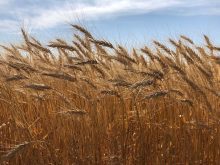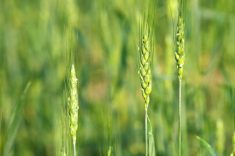Farmers in parts of Alberta are spraying for flea beetles, and the pest is popping up elsewhere — but before spraying, farmers should make sure damage breaches economic thresholds.
During a scheduled online insect chat, Scott Meers, entomologist with Alberta Agriculture and Rural Development at Brooks, wrote that farmers were spraying for flea beetles in the Peace region. So far, most reported flea beetles are striped, but Meers is seeing crucifer flea beetles emerging in traps.
Dan Orchard, Canola Council of Canada agronomist for north-central Alberta at Wetaskiwin, wrote he was hearing of stem feeding and spraying north of Westlock.
Read Also

Seeds Canada announces Dan Wright as new CEO
Seeds Canada has announced Dan Wright as its new chief executive officer.
But low levels of flea beetle damage likely don’t require action.
“Spraying those few flea beetles now makes no economic sense and will not protect the field if a larger population is on its way,” Greg Sekulic, Canola Council agronomist for the Peace region at Grande Prairie, said in a release.
Farmers should keep an eye on the situation, though, as both crucifer and striped flea beetles can cause economic damage. Farmers should also keep in mind that high-rate seed treatments are active for around four to five weeks after seeding.
Below are five things to look for before spraying, courtesy of the Canola Council of Canada:
Damage level
- Flea beetles move from field edge to middle, so farmers should check the centre of the field to see if damage is widespread.
- Check 20 plants from 10 different sites within the field.
- Technically, the economic threshold for flea beetle damage is 50 per cent defoliation over a wide area of the field. But when flea beetles are feeding voraciously, leaf damage can go from 25 per cent to 50 per cent in a flash, so entomologists suggest action once defoliation hits 25 per cent, if flea beetles are actively feeding.
- For more on estimating flea beetle damage, see this Canola Watch article.
Stem feeding
- Check under leaves and on stems, especially if the weather cools.
- If flea beetles are actively eating stems, farmers may need to spray even if leaf damage hasn’t reached 25 per cent. Even a little stem feeding can be fatal to seedlings.
Plant stand
- The economic thresholds are based on a stand of seven to 14 plants per square foot.
- Thinner plant stands are more vulnerable to damage, and so farmers may need to spray sooner with thin plant stands.
Damage on newest leaves
- If new leaves are 25 per cent defoliated and the flea beetles are still eating, spraying may be required.
- If newest leaves aren’t damaged and are growing quickly, spraying likely isn’t required, even if the cotyledons look like Swiss cheese.
Crop stage
- Canola can stand flea beetle damage, without economic loss, once it passes the four leaf stage.
- For uneven crops, keep checking until most plants are beyond the four leaf stage.
- Plants growing between rows may be volunteers, which don’t contribute to yield and aren’t worth protecting.
Shelley Barkley, insect research technologist with Alberta Agriculture and Rural Development at Brooks, moderates regular Alberta insect chats through Twitter. Farmers interested in the next chat can follow the #abbugchat hashtag on Twitter.
Barkley’s Twitter handle is @Megarhyssa. Meers goes by @ABbugcounter, and Orchard by @orchardccc. Greg Sekulic’s handle is @sekulicccc.
— Lisa Guenther is a field editor with Grainews at Livelong, Sask. Follow her @LtoG on Twitter.















